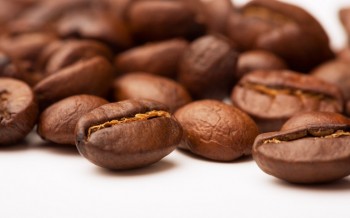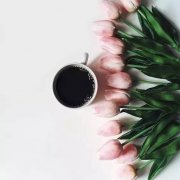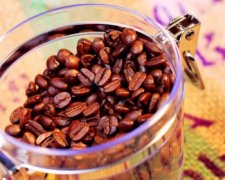World Map of Coffee-- Origin, Development, Flavor and Variety of Brazilian Coffee

For professional baristas, please follow the coffee workshop (Wechat official account cafe_style)
When it comes to Brazilian Santos, apart from the football team, I believe many people will think of coffee. Santos is a port in southeastern Brazil. In the past, the name of the port was printed on the export of coffee (generic coffee) from different provinces, but unknown importers promoted Santos as a coffee variety. In fact, similar confusion occurred in the Yemeni port of Mocha.
Brazil is the largest country in Latin America and the world's largest coffee producer in the past 150 years. 1/3 of the world's coffee comes from Brazil, followed by Vietnam, Colombia and Indonesia. The annual production of Minas Gerais province in the south-east alone (20 million bags) has exceeded the national capacity of neighbouring Colombia (about 10 million bags). In addition, Sao Paulo, ESP í rito Santo and Bahia also belong to boutique coffee producing areas. Among them, Sul de Minas (that is, the south of Minas Gerais) has won 90% of the top 20 award-winning coffee of Cup of Excellence (COE) in the past two years.
But behind the brilliant record lies overdevelopment and logging. A tropical rainforest nurtured by the Amazon has been uninhabited for thousands of years. But since the economic incentives of coffee exports in the 18th century, Brazil's primitive ecology has gradually become a mechanized agricultural factory. Legend has it that this history began when an army colonel seduced the wife of the French governor and obtained the seed in 1723. After black slavery and later the European immigrant land distribution system, Brazil's coffee production capacity once reached half of the world's demand. But with the subsequent collapse of commodity markets and "soil fatigue" (as Brazilian farmers say) caused by excessive grain production, farmers have changed their targets from quantity to quantity, coinciding with the rise of the boutique movement in recent years.
Strong cocoa flavor Italian formula bean pet
In terms of planting environment, as Brazil has few highlands of more than 3000 feet, coupled with the lack of volcanic soil (Volcanic Soil), it is actually not conducive to growing coffee. The early spread depended on the immediate nutrients provided by the uncultivated red-purple soil (Terra Roxa) and the primeval forests burned to ashes. As a result, Brazilian coffee is not sour, but its strong cocoa and nut flavors, coupled with a mellow taste, make Brazilian coffee the favorite of Italian formula beans. Brazil is also a common basic ingredient (base coffee), whether it is a chain or boutique.
Study on bean seeds since the 1930s
Due to congenital conditions, the Brazilian government has invested a lot of resources to improve varieties and disease resistance since the 1930s. Among them, the results of bean research still affect the planting habits of Latin America as a whole. For example, they cultivated the natural variety Yellow Bourbon of Bourbon from 1/1000000 opportunities in the 1930s, discovered Caturra (the Bourbon variety) in the 1940s, and later Mundo Novo (artificial breeding of Typica & Bourbon), Catua í (artificial breeding of Mundo Novo & Caturra), Icatu (with Robusta pedigree) produced in the 1990s, and the rare Acai á (breeding of Mundo Novo). Most of the countries in China and the United States choose suitable varieties from the above list. When my friends encounter problems, they mostly turn to their Brazilian counterparts for advice. The Brazilian Ministry of Agriculture and its academic research institutes established Cons ó rcio Pesquisa Caf é in 1997 to further specialize in coffee planting, disease resistance research and harvesting and treatment. Genoma Caf é, established in 2002, is the forerunner of coffee gene map.
The Cup of Excellence (COE) contest, which represents the boutique sports, is the predecessor of Best of Brazil. Since 1999, 12 countries have participated in the event. In the past, COE only accepted non-tanned coffee, but in view of the fact that Brazilian coffee is mostly tanned and farmers' mastery of the technology has improved, the Congress has held a "Late Harvest" competition for tanned coffee since 2012. In this year's competition, among the top 10 non-tanning groups (Early Harvest), Yellow Bourbon won six and Yellow Catua í three. As for the sun group, Catua í was dominant, accounting for 8. Acai á won the rest of the rankings. It can be seen that the advantages of different kinds of beans will give full play to their potential due to proper handling.
Patrick Tam (owner of the boutique coffee shop Knockbox, approved barista of the American Fine Coffee Association and European Fine Coffee Association, CQI recognized cup tester, Cup of Excellence's first Hong Kong judge)
Important Notice :
前街咖啡 FrontStreet Coffee has moved to new addredd:
FrontStreet Coffee Address: 315,Donghua East Road,GuangZhou
Tel:020 38364473
- Prev

Map of Coffee World (Preface)
Professional baristas Please follow the people who used to be in the coffee shop (official Wechat account cafe_style) who believed that the earth was flat: the world had an end, and if you sailed there, you would fall into the abyss with a waterfall. This set of ideas is intermingled with superstition, religion and fantasy. It was not until the scientific knowledge matured that people gradually accepted that they had lived on the sphere for generations. Overthrow coffee is bitter
- Next

World Map of Coffee-study on the Management and varieties of Coffee in Colombia
Professional baristas Please follow the Coffee Workshop (official Wechat account cafe_style) it is often said that high-quality South American coffee looks like Central America, meaning that Central American coffee is superior to South America, which mainly produces commercial coffee in terms of bean seed, soil, and treatment. But I think Colombia is an exception: on the cup test table, the highest-scoring boutique coffee is generally floral and fruity. The best taxi.
Related
- Does Rose Summer choose Blue, Green or Red? Detailed explanation of Rose Summer Coffee plots and Classification in Panamanian Jade Manor
- What is the difference between the origin, producing area, processing plant, cooperative and manor of coffee beans?
- How fine does the espresso powder fit? how to grind the espresso?
- Sca coffee roasting degree color card coffee roasting degree 8 roasting color values what do you mean?
- The practice of lattes: how to make lattes at home
- Introduction to Indonesian Fine Coffee beans-- Java Coffee producing area of Indonesian Arabica Coffee
- How much will the flavor of light and medium roasted rose summer be expressed? What baking level is rose summer suitable for?
- Introduction to the characteristics of washing, sun-drying or wet-planing coffee commonly used in Mantenin, Indonesia
- Price characteristics of Arabica Coffee Bean Starbucks introduction to Manning Coffee Bean Taste producing area Variety Manor
- What is the authentic Yega flavor? What are the flavor characteristics of the really excellent Yejasuffi coffee beans?

